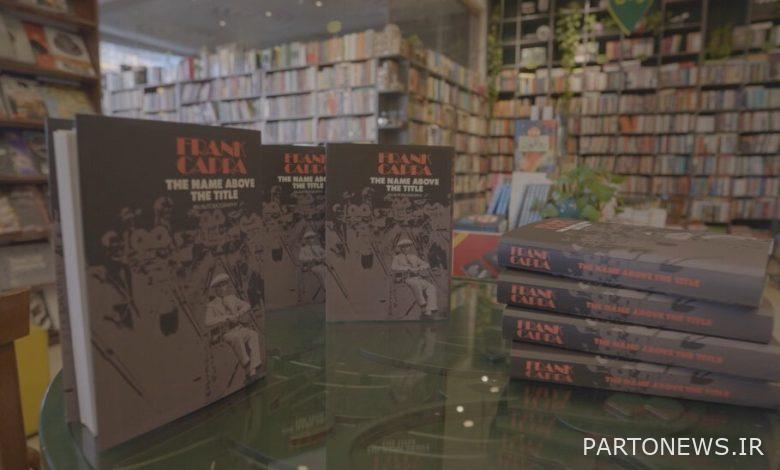Where is the analysis of a documentary about the place of hope in cinema and art / Capra? Mehr News Agency Iran and world’s news

Mehdi Kashefifard Scientific advisor of the documentary “Where is Capra?” Which is the title of the latest work of Soura Documentary and Television Center, in an interview with Mehr reporter, about how he met Mehdi Ansari, the director of this work, and how he joined this project: Mehdi Ansari and I in 1994 We were in touch with each other until we came to the conclusion that we could work together. We collaborated on several projects and our last collaboration was on the “Where is Capra?” Was achieved.
He stated that this documentary, apart from its genre features and production requirements, relies on a series of reliable, objective and tangible data for the audience. Research is an important part of the job.
“Where is Capra?” And perspectives on the art and philosophy of film
“Where is Capra?” He puts forward an idea that is not a new idea in the theoretical space of film. They believe in art. In fact, one view believes that art is essentially a reflection of the state of society, which goes back to the Marxist view and justifies that the relations of production and political economy govern the production space and economic and financial relations in general, and culture and art and human expression in society. Seen, is built on it.
“Where is Capra?” He added: “Because where is Capra?” There are also a number of scientific claims, which required scientific and theoretical precision to take place in this space. As a scientific advisor, I also pursued scientific discussions based on film and documentary theories as well as the subject of the documentary itself.
Regarding his collaboration with Mehdi Ansari, Kashfi-Fard said: “This director accepts correct and helpful ideas and suggestions, and consults with those who are experts, regardless of their orientation, and works in this project as a team.”
He continued: “I added parts of the conversations we had with each other during the documentary, that is, the initial conversation that the director had planned did not necessarily take place.” When we talked about mental processing, we had a back and forth and a serious challenge, and part of it was due to the difference of opinion between me and Mehdi Ansari. Also, the words I was interested in talking about were not said 100%, but in general, “Where is Capra?” It has a new format in which the director’s courage in using the new formula is exemplary.
“Where is Capra?” He emphasized: “The dialogue between me and the director is not so difficult and complicated, and we do not seek to support only one current, but the dialogue is balanced and reciprocal.” On the other hand, what is important is the conversation that takes place, and if we wanted to add a face to the documentary, we had to specify its task at the end. Mehdi Ansari has a clear role as a documentary narrator, and I represent the conversations that take place in society.
The idea of ”Where is Capra?” It is based on theoretical discussions about the function of art
Referring to the views on art, he clarified: Basically, some define art as a reflection and a mirror that shows the events of society. On the other hand, some believe that art should have a balance for reality; That is, to add something to reality. That is, if art is to mirror the things that exist in society, it does not do a special and unique work, but the work of art is to add value to reality.
“Where is Capra?” He pointed out that Schiller, in his theoretical discussions, says that art connects the rational and the tangible. Art stands in the middle, meaning that art is neither a mere theoretical thought nor a technique, but has an intermediate state and should guide society in such a way that it sheds light on society and promotes good behaviors in society. In fact, the idea of ”Where is Capra?” It is based on these theoretical issues, but it is not new, but it is presented as a new idea in the conditions of our society.
Kashfifard points out that in a situation where economic conditions are unfavorable and filmmakers portray the very hardships and blackness of society, a new idea arises as to why we focus on values that are specific to us and beyond global values. “We do not,” he said. Showing a completely black situation in a film does not help to solve the problem, but a hopeful society acts hopefully, and if it has a good mood, it can make demands.
He stated that if we are to follow the approach of formation in artistic productions and be hopeful, we must review and reform the whole system of the country, which includes the economic, political, etc. system: What is art and art itself is basically with Social structure is linked. Where are we at Capra? We compare the two time conditions. Now the point is that comparing has considerations, that is, whether the comparison we make is based on common ground or not. But in order to achieve a hopeful approach, we need to reform many things in society, and otherwise, if hope wants to be transferred to society, it is an imaginary hope.
“Where is Capra?” Kashififard concluded. He also took a look at Italian-American director Frank Capra and his work as the most promising director. In the documentary approach, hope that leads to movement and is linked to reason and demand that pursues the public interest is appropriate, but if the only hope is that we give content to the community to entertain the situation tomorrow. Tolerate, this is the negative function of creating hope, and it fulfills the same state of imaginary hope to entertain society of the transcendent.
This documentary will soon be aired on national media.

